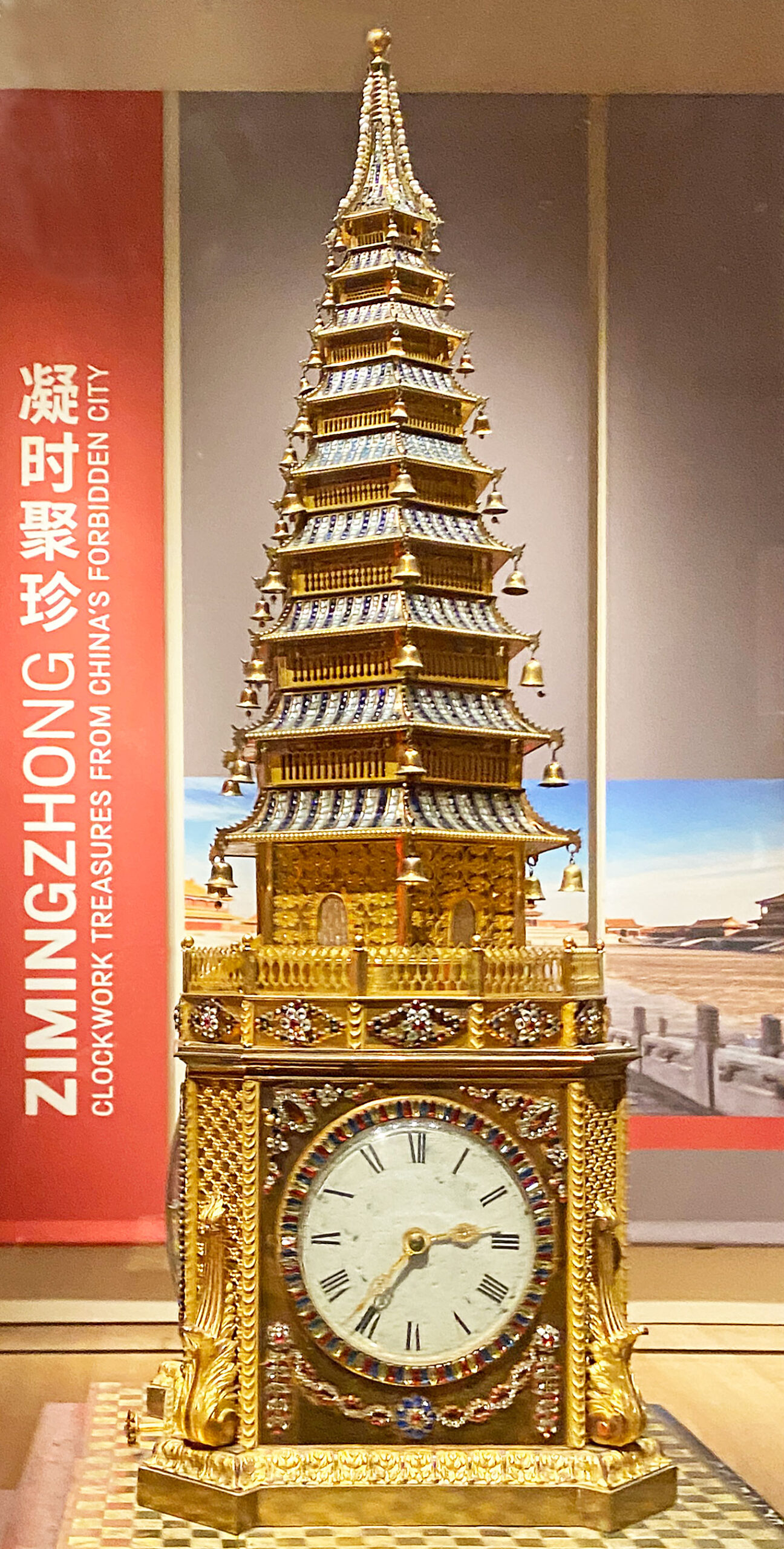 Zimingzhong at the Science Museum.
Zimingzhong at the Science Museum.
Wherever we travel we take a timekeeping instrument with us. It’s essential: set the alarm clock, catch a train, check in at the airport, schedule a meeting… Modern life would be chaos if we had to rely for our punctuality on the rising and setting of the sun. But centuries ago that was the lot of the people, who could only dream of owning one of those luxury articles.
In the sixteenth century, European clock design was developing rapidly, and when missionaries reached China in the early 1600s, bringing clocks as gifts, the Imperial powers were very much taken with the clocks from the West. They saw these timepieces as a means of managing the household and regulating the business of the Emperor, and advancing their understanding of astronomy.
Those clocks were expensive, and even more so once they had arrived in China. But by the time of the Qing Dynasty in the 1700s a trade in highly ornate English and European clocks was developing. In order to enhance these machines to satisfy the fascination of the Emperors with all things Western, craftsmen of the very highest skills, both in England and in China, were adding visual excitement. There are gold cases, sparkling jewels, exotic animals, moving pictures, swimming ducks and dancing flowers – all set to musical chimes and even tuneful popular songs!
These sophisticated works of art were known as zimingzhong – ‘bells that ring themselves’ – and became ever more intricate and decorative as the makers competed with one another for the Emperor’s favour. More than twenty stunning examples of these highly-acclaimed treasures are now on display at the Science Museum, London, in their magnificent exhibition Zimingzhong: Clockwork Treasures from China’s Forbidden City. Once belonging to the Emperors of China and held in the palace known as the Forbidden City, they have been kindly loaned by The Palace Museum in Beijing, and this is the first time that most of these masterpieces have returned to their country of origin.
 There are also interactive exhibits to demonstrate how the inner workings of these clocks achieve their ingenious displays; contemporaneous documents and detailed labelling explain the designs, the trade links, and the two-way cultural exchanges that resulted. The visitor will be amazed by the flamboyant clocks, and by the remarkable engineering hidden inside those 300-year-old creations. Take a close look at the clock faces, too, and see if you can spot the one that’s ‘back-to-front’.
There are also interactive exhibits to demonstrate how the inner workings of these clocks achieve their ingenious displays; contemporaneous documents and detailed labelling explain the designs, the trade links, and the two-way cultural exchanges that resulted. The visitor will be amazed by the flamboyant clocks, and by the remarkable engineering hidden inside those 300-year-old creations. Take a close look at the clock faces, too, and see if you can spot the one that’s ‘back-to-front’.
The exhibition opened on 1st February 2024 and runs until Sunday 2nd June 2024.
The Science Museum, Exhibition Road, South Kensington, London SW7 2DD www.sciencemuseum.org.uk
Zimingzhong: Clockwork Treasures from China’s Forbidden City is supported by The Huo Family Foundation and the Lee Kai Hung Foundation, and includes cultural material developed in collaboration with China Exchange.
